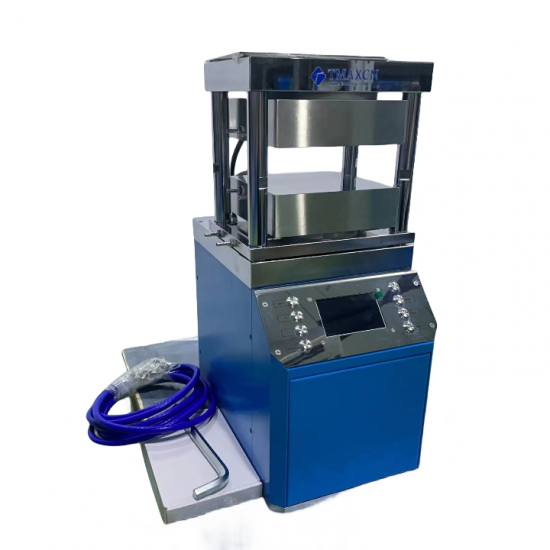Xiamen Tmax Battery Equipments Limited was set up as a manufacturer in 1995, dealing with Laboratory equipments, technology, etc. We have total manufacturing facilities of around 2, 000 square meters and more than 100 staff. Owning a group of experie-nced engineers and staffs, we can bring you not only reliable products and technology, but also excellent services and real value you will expect and enjoy.
A hot pellet press, also known as a heated pellet press or thermal pellet press, is specialized equipment designed to produce pellets from powdered materials by applying both heat and pressure. This type of press is widely used in various industries and research applications where it's necessary to create dense, uniform pellets for analysis, testing, or manufacturing purposes. Common uses include the preparation of samples for infrared (IR) spectroscopy, Xray fluorescence (XRF) analysis, and the production of smallscale material samples.
Key Features of a Hot Pellet Press
1. Heating System
Heated Platens: The press features heated platens that provide uniform heating across their surfaces. These platens are made from materials with excellent thermal conductivity to ensure even heat distribution throughout the sample.
Temperature Control: Advanced temperature controllers allow for precise setting and maintenance of temperatures, typically ranging from ambient up to 300°C or higher, depending on the application requirements.
Thermal Insulation: Highquality insulation minimizes heat loss and ensures energy efficiency while protecting machine components.
2. Hydraulic Pressure Application
High Force Capacity: Capable of generating substantial force using hydraulic systems, often ranging from several tons to hundreds of tons, which is essential for compressing powdered materials into dense pellets.
Pressure Regulation: Offers fine control over applied pressure, allowing adjustments based on the specific needs of different materials and processes.
3. Control Systems
Programmable Logic Controller (PLC) or HumanMachine Interface (HMI): Modern presses come equipped with userfriendly interfaces that enable operators to set and monitor parameters like temperature, pressure, dwell time, and cooling rates.
Recipe Management: Supports storing multiple recipes for different materials and processes, facilitating quick changeovers without manual reconfiguration.
4. Pellet Production Process
Sample Preparation: Powdered material is placed into a mold or die, which is then positioned between the heated platens.
Application of Heat and Pressure: The press applies controlled heat and pressure to the mold, causing the powder to fuse together into a solid pellet.
Cooling and Ejection: After the pressing cycle, the pellet is cooled and then ejected from the mold, ready for use.
5. Safety Features
Emergency Stop Buttons: Provides immediate shutdown capabilities to enhance operator safety.
Pressure Relief Valves: Protects against overloading by releasing excess pressure, ensuring both operator safety and equipment longevity.
Interlocks and Guarding: Prevents access to hazardous areas during operation, ensuring safe handling.
Double Heating Plate press
6. Applications
Analytical Sample Preparation: Widely used in laboratories for preparing pellets for IR spectroscopy, XRF analysis, and other analytical techniques requiring solid samples.
Material Research and Development: Useful for creating test samples of new materials or composites under controlled conditions of heat and pressure.
SmallScale Manufacturing: Suitable for producing small quantities of pellets for niche products or pilot production runs in industries such as pharmaceuticals, chemicals, and advanced materials.
Choosing the Right Hot Pellet Press
When selecting a hot pellet press, consider factors such as the required temperature and pressure ranges, the types of materials you will be working with, the precision needed for your experiments or production processes, available space in your facility, and any specific features relevant to your intended use (e.g., heated platens, programmable controls). Investing in a hot pellet press tailored to your needs can greatly enhance operational efficiency, sample quality, and overall productivity in your laboratory or manufacturing environment. Whether you're focusing on analytical sample preparation, material research, or smallscale production, the right hot pellet press can significantly improve your outcomes by providing precise control over the conditions affecting pellet formation and quality.



